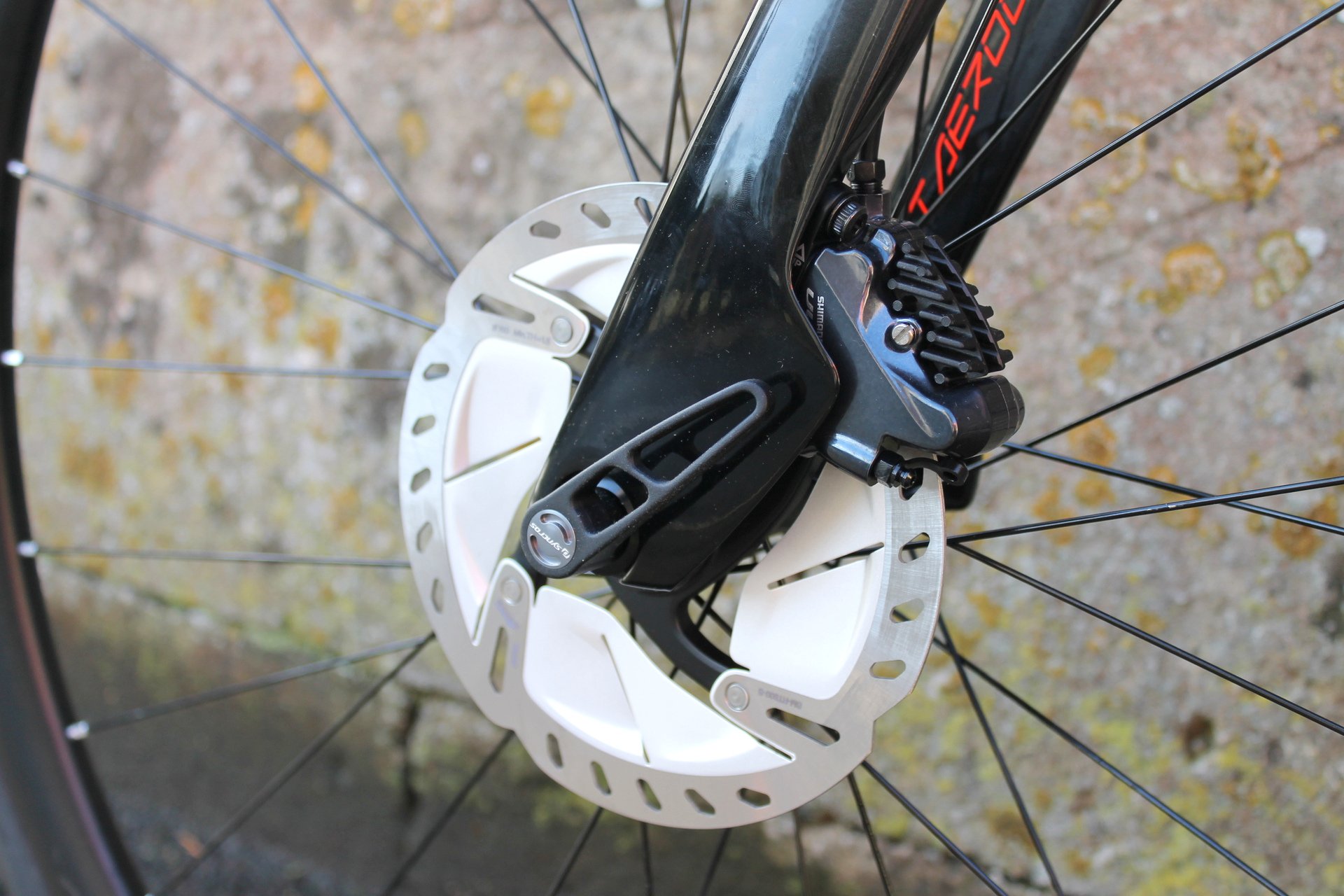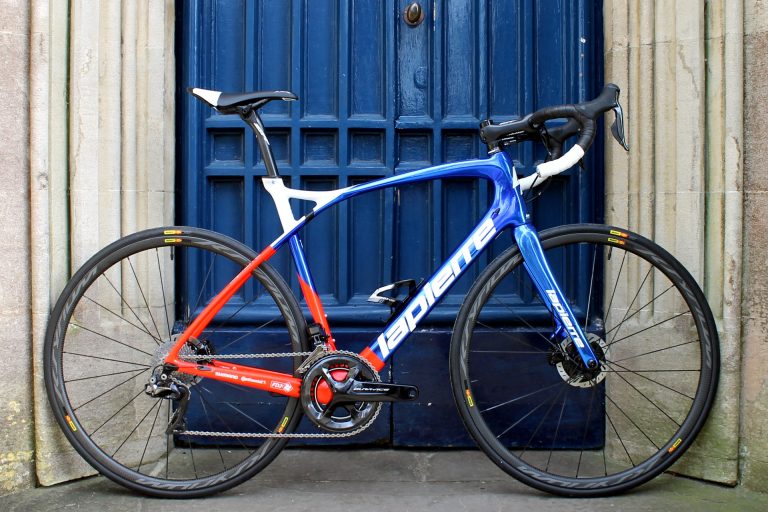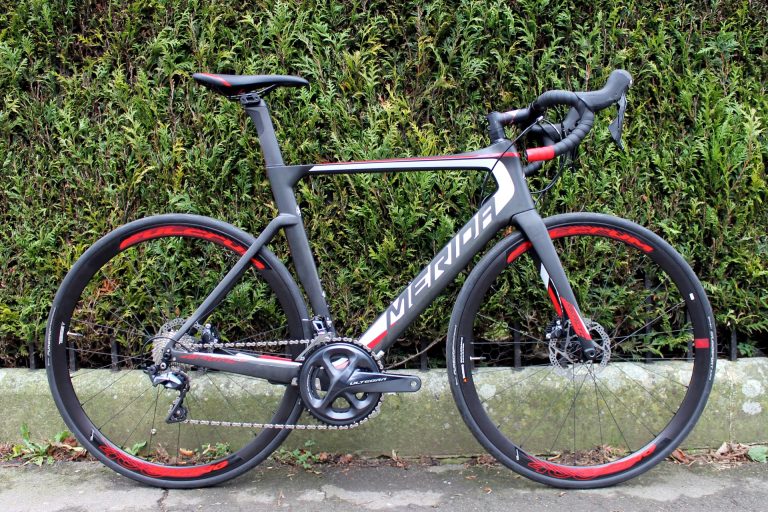The key difference is the type of carbon fibre used. Whereas the Premium gets Scott’s top-level HMX carbon layup, the Foil 10 Disc (Shimano Ultegra Di2, £4,299) and Foil 20 Disc (Shimano Ultegra mechanical, £3,299) we have here use the Swiss brand’s HMF blend. HMX carbon fibre is claimed to be 20 per cent stiffer than HMF for the same weight – but it’s three times more expensive. As a result, the flagship Foil Disc frame weighs 970g, whereas the second-tier model comes in at a claimed 1,090g. That’s nothing unusual – almost every brand will use different types of carbon fibre through a range – but it provides some context to the Foil Disc line-up.
The tube profiles are the same regardless of what bike you choose, as is the aggressive geometry. This sees a 73 degree, 170mm headtube married to a horizontal top tube length of 565mm in the large sized bike on test, with a 410mm chainstay length, which remains the same across all sizes of the disc brake frame.
The bike’s raison d’être is aerodynamic efficiency, and Scott has retained the major shapes and ‘comfort zone’ features of the rim brake version, but took advantage of the recent relaxation in the UCI’s 3:1 tube profile regulation to introduce a redesigned fork and develop integrated shrouds around the dropouts. These help shield the calipers from the wind and result in a claimed net benefit of – wait for it – half of a single watt when rolling at 40km/h. At the back, Scott has also beefed up the brake-side chainstay with a squarer profile to help balance the disc brake forces.




